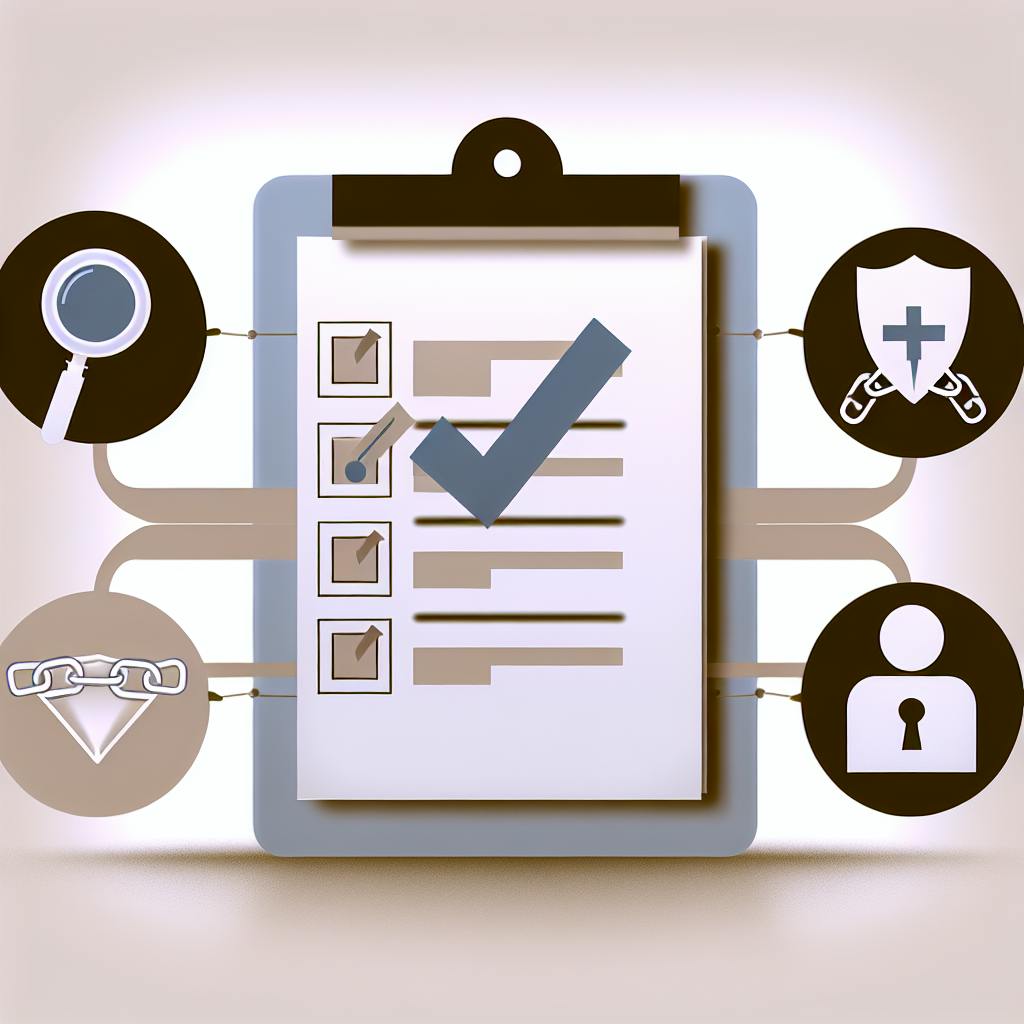Effective communication with vendors is crucial for successful business partnerships. Here are the key tips:
-
Establish Clear Communication Channels
- Designate a single point of contact
- Define preferred communication methods (email, phone, project management tools)
- Set expectations for response times and communication frequency
-
Set Clear Expectations
- Define project scope, objectives, deliverables, and timelines
- Specify performance metrics and Key Performance Indicators (KPIs)
- Outline expectations for vendor responsiveness and communication
-
Foster Open and Honest Communication
- Encourage transparency and share information freely
- Practice active listening and clarify misconceptions
- Provide regular feedback to vendors
-
Utilize Technology to Enhance Communication
- Use communication platforms like email, video conferencing, and social networking
- Leverage collaboration tools and project management software
- Consider implementing a Vendor Management System (VMS)
-
Develop a Comprehensive Vendor Management Plan
- Define vendor selection criteria, communication protocols, and performance metrics
- Outline issue resolution processes and contract management procedures
- Identify and mitigate risks associated with vendor relationships
-
Monitor and Evaluate Vendor Performance
- Set clear performance metrics (delivery time, quality, cost, customer satisfaction)
- Conduct regular performance reviews and address issues
- Use data to drive decision-making and optimize supply chain
-
Cultivate a Long-Term Partnership
- Develop a collaborative mindset and encourage open communication
- Set clear expectations for roles, responsibilities, goals, and objectives
- Continuously evaluate and improve the partnership
-
Continuously Improve Communication Processes
- Identify areas for improvement through vendor feedback and communication metrics
- Implement changes and adjustments to communication protocols and tools
- Monitor and evaluate progress to ensure alignment with business goals
By following these tips, businesses can improve their relationships with vendors, streamline operations, and achieve their goals through effective communication and collaboration.
| Recommended Practice | Description |
|---|---|
| Establish Clear Expectations | Clearly define roles, responsibilities, communication protocols, and performance metrics for vendors. |
1. Establish Clear Communication Channels
Clear communication with HR technology vendors starts with setting up effective communication channels. This helps prevent misunderstandings, miscommunications, and delays that can lead to conflicts and negatively impact the partnership.
To establish clear communication channels, follow these steps:
| Step | Action |
|---|---|
| 1 | Designate a single point of contact for the vendor relationship |
| 2 | Define the preferred communication methods (e.g., email, phone, project management tools) |
| 3 | Establish a clear escalation procedure for addressing issues or concerns |
| 4 | Set expectations for response times and communication frequency |
| 5 | Regularly review and update communication channels to ensure they remain effective |
By following these steps, you can ensure that your vendor relationships are built on a foundation of transparency, trust, and open communication. This sets the stage for a collaborative and productive partnership that benefits both parties.
2. Set Clear Expectations
Clear expectations are vital for effective vendor communication. They help prevent misunderstandings, ensure both parties are on the same page, and facilitate a smooth partnership. To set clear expectations, follow these steps:
Define Project Scope and Objectives
| Step | Action |
|---|---|
| 1 | Define the project scope, including specific tasks, deliverables, and timelines |
| 2 | Establish clear communication channels and protocols for reporting, updates, and issue escalation |
| 3 | Specify performance metrics and Key Performance Indicators (KPIs) to measure vendor success |
| 4 | Outline expectations for vendor responsiveness, including response times and communication frequency |
| 5 | Regularly review and update expectations to ensure they remain relevant and effective |
Best Practices for Setting Clear Expectations
- Be specific and concise in your communication to avoid ambiguity
- Ensure that expectations are realistic and achievable
- Establish a clear understanding of the vendor's capabilities and limitations
- Regularly review and update expectations to ensure they remain relevant and effective
By following these steps and best practices, you can ensure that your vendor relationships are built on a foundation of clear expectations, leading to a more productive and successful partnership.
3. Foster Open and Honest Communication
Effective communication with vendors relies on building open and honest relationships. This involves creating an environment where both parties feel comfortable sharing their concerns, ideas, and feedback.
To foster open and honest communication, follow these best practices:
Encourage Transparency
| Action | Description |
|---|---|
| Share information freely | Be transparent about your expectations, timelines, and challenges. |
| Encourage vendor transparency | Create a culture of openness and honesty. |
Active Listening
| Action | Description |
|---|---|
| Pay attention to vendor concerns | Respond promptly to their queries. |
| Clarify misconceptions | Ensure you understand their perspective. |
Regular Feedback
| Action | Description |
|---|---|
| Provide regular feedback | Highlight vendor strengths and areas for improvement. |
| Encourage vendor feedback | Use this feedback to improve communication and collaboration. |
By fostering open and honest communication, you can build a strong and productive relationship with your vendor, leading to better outcomes and a more successful partnership.
4. Utilize Technology to Enhance Communication
Effective communication with vendors relies on leveraging technology to streamline interactions, increase efficiency, and reduce errors.
Communication Platforms
| Platform | Description |
|---|---|
| Enables real-time communication and collaboration | |
| Video Conferencing | Facilitates face-to-face interactions and remote meetings |
| Social Networking | Provides a centralized hub for all communication and collaboration |
Collaboration Tools
| Tool | Description |
|---|---|
| Project Management Software | Facilitates seamless collaboration among stakeholders |
| Shared Document Repositories | Enables teams to share files and track progress in real-time |
Vendor Management Systems
Vendor management systems (VMS) are designed to optimize vendor relationships. VMS platforms provide a centralized platform for managing vendor interactions, tracking performance, and evaluating vendor suitability.
By utilizing technology, you can enhance communication with your vendors, leading to improved relationships, increased efficiency, and better outcomes.
5. Develop a Comprehensive Vendor Management Plan
Effective communication with vendors relies on having a clear plan in place. This plan outlines the strategies, processes, and policies for managing vendor relationships, ensuring that both parties are aligned and working towards common goals.
Key Components of a Vendor Management Plan
A comprehensive vendor management plan should include the following key components:
| Component | Description |
|---|---|
| Vendor Selection Criteria | Clearly outlines the criteria for selecting vendors, including factors such as pricing, quality, and reliability. |
| Communication Protocols | Establishes the protocols for communication, including frequency, format, and channels. |
| Performance Metrics | Defines the key performance indicators (KPIs) used to measure vendor performance, including metrics such as delivery time, quality, and cost. |
| Issue Resolution Process | Outlines the process for resolving issues and conflicts, including escalation procedures and dispute resolution mechanisms. |
| Contract Management | Details the processes for managing contracts, including contract negotiation, execution, and renewal. |
| Risk Management | Identifies and mitigates risks associated with vendor relationships, including risks related to security, compliance, and business continuity. |
By having a comprehensive vendor management plan in place, organizations can ensure that vendor relationships are managed effectively, and that both parties are working towards common goals. This plan provides a framework for communication, performance measurement, and issue resolution, helping to build trust and foster long-term partnerships.
sbb-itb-d78b90b
6. Monitor and Evaluate Vendor Performance
Regularly monitoring and evaluating vendor performance is crucial for effective communication. This process helps identify areas for improvement, ensures compliance with contractual agreements, and fosters a collaborative relationship.
Set Clear Performance Metrics
Define key performance indicators (KPIs) that align with your organization's goals and objectives. These metrics can include:
| Metric | Description |
|---|---|
| Delivery Time | Measures the time taken to complete tasks or projects |
| Quality | Evaluates the quality of work or services provided |
| Cost | Tracks the cost of goods or services |
| Customer Satisfaction | Measures customer satisfaction with vendor services |
Conduct Regular Performance Reviews
Schedule regular performance reviews with your vendors to:
- Discuss their progress
- Address any issues
- Set goals for improvement
These reviews provide an opportunity to evaluate vendor performance, identify areas of strength and weakness, and adjust the relationship as needed.
Use Data to Drive Decision-Making
Analyze vendor performance data to:
- Identify trends and patterns
- Inform decision-making
- Optimize your supply chain
Foster Open Communication
Encourage open and honest communication with your vendors. Establish a culture of transparency and collaboration, where both parties feel comfortable sharing concerns, ideas, and feedback.
By monitoring and evaluating vendor performance regularly, you can ensure that your vendors are meeting their contractual obligations, identify areas for improvement, and foster a collaborative relationship that drives mutual success.
7. Cultivate a Long-Term Partnership
Building a long-term partnership with your vendors is crucial for effective communication and mutual success. This involves fostering a collaborative relationship, setting clear expectations, and continuously evaluating and improving the partnership.
Develop a Collaborative Mindset
To create a successful partnership, both parties must work together collaboratively. This means:
- Encouraging open communication
- Being transparent and trustworthy
- Sharing goals and objectives
Set Clear Expectations
Clearly define the roles, responsibilities, and expectations of both parties. This includes:
| Expectation | Description |
|---|---|
| Roles and Responsibilities | Define the tasks and duties of each party |
| Goals and Objectives | Establish shared goals and objectives |
| Key Performance Indicators (KPIs) | Set metrics to measure performance |
Continuously Evaluate and Improve
Regularly assess the partnership's performance and identify areas for improvement. This helps to:
- Address any issues or concerns
- Implement changes and adjustments
- Strengthen the relationship
By cultivating a long-term partnership, you can:
- Build trust and credibility
- Improve communication and collaboration
- Increase efficiency and productivity
- Drive mutual success and growth
Remember, a successful partnership requires ongoing effort and commitment from both parties. By prioritizing collaboration, clear expectations, and continuous improvement, you can create a strong and lasting partnership with your vendors.
8. Continuously Improve Communication Processes
Effective communication with vendors is an ongoing process that requires regular evaluation and refinement. As your business and vendor relationships evolve, it's essential to assess and adjust your communication strategies to ensure they remain effective.
Identify Areas for Improvement
Regularly evaluate your communication processes to identify areas that need improvement. You can do this by:
- Conducting regular vendor feedback sessions
- Analyzing communication metrics, such as response times and resolution rates
- Reviewing communication protocols and procedures
Implement Changes and Adjustments
Based on your evaluation, implement changes and adjustments to your communication processes. This may include:
| Action | Description |
|---|---|
| Update communication protocols and procedures | Ensure they are current and effective |
| Provide additional training for vendor management teams | Enhance their communication skills |
| Implement new communication tools and technologies | Improve efficiency and productivity |
Monitor and Evaluate Progress
Continuously monitor and evaluate the effectiveness of your communication processes, making adjustments as needed. This ensures that your communication strategies remain aligned with your business goals and vendor relationships.
By continuously improving your communication processes, you can:
- Enhance vendor relationships and trust
- Increase efficiency and productivity
- Improve issue resolution and reduce conflicts
- Drive mutual success and growth
Remember, effective communication is a continuous process that requires ongoing effort and commitment. By prioritizing communication improvement, you can ensure that your vendor relationships remain strong and productive.
Conclusion
Effective communication with vendors is crucial for successful partnerships. By following the eight tips outlined in this guide, businesses can improve their relationships with vendors, streamline operations, and achieve their goals.
To recap, the key takeaways are:
| Tip | Description |
|---|---|
| 1. Establish Clear Communication Channels | Set up effective communication channels to prevent misunderstandings and delays. |
| 2. Set Clear Expectations | Define project scope, objectives, and performance metrics to ensure both parties are on the same page. |
| 3. Foster Open and Honest Communication | Encourage transparency, active listening, and regular feedback to build trust and collaboration. |
| 4. Utilize Technology to Enhance Communication | Leverage technology to streamline interactions, increase efficiency, and reduce errors. |
| 5. Develop a Comprehensive Vendor Management Plan | Create a plan that outlines strategies, processes, and policies for managing vendor relationships. |
| 6. Monitor and Evaluate Vendor Performance | Regularly review vendor performance to identify areas for improvement and ensure compliance with contractual agreements. |
| 7. Cultivate a Long-Term Partnership | Foster a collaborative relationship by setting clear expectations, sharing goals, and continuously evaluating and improving the partnership. |
| 8. Continuously Improve Communication Processes | Regularly assess and refine communication strategies to ensure they remain effective and aligned with business goals. |
By implementing these tips, businesses can ensure that their vendor relationships remain strong, productive, and mutually beneficial. Remember to regularly revisit and refine these strategies to achieve long-term success in vendor management.
FAQs
Which of the following is a recommended practice for effective vendor management?
Establish Clear Expectations
To manage vendors effectively, you need to clearly define what you expect from them. This includes:
| Expectation | Description |
|---|---|
| Roles and Responsibilities | Clearly define the tasks and duties of both vendors and buyers |
| Communication Protocols | Establish how and when to communicate |
| Performance Metrics | Set metrics to measure vendor performance |
By setting clear expectations, you can ensure that both parties are on the same page and working towards common goals.


